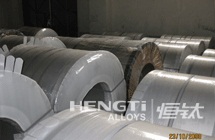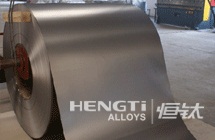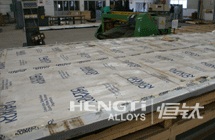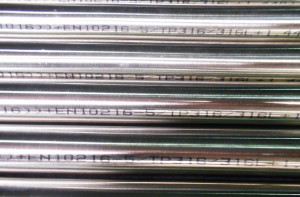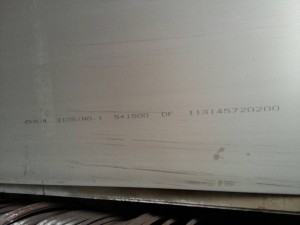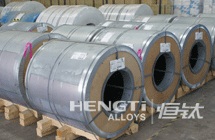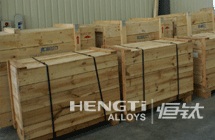304
Short Description:
Introduction Grade 304 is the standard “18/8″ stainless; it is the most versatile and most widely used stainless steel, available in a wider range of products, forms and finishes than any other. It has excellent forming and welding characteristics. The balanced austenitic structure of Grade 304 enables it to be severely deep drawn without intermediate annealing, which has made this grade dominant in the manufacture of drawn stainless parts such as sinks, hollow-ware and saucep...
Product Detail
FAQ
Product Tags
IntroductionGrade 304 is the standard “18/8″ stainless; it is the most versatile and most widely used stainless steel, available in a wider range of products, forms and finishes than any other. It has excellent forming and welding characteristics. The balanced austenitic structure of Grade 304 enables it to be severely deep drawn without intermediate annealing, which has made this grade dominant in the manufacture of drawn stainless parts such as sinks, hollow-ware and saucepans. For these applications it is common to use special “304DDQ” (Deep Drawing Quality) variants. Grade 304 is readily brake or roll formed into a variety of components for applications in the industrial, architectural, and transportation fields. Grade 304 also has outstanding welding characteristics. Post-weld annealing is not required when welding thin sections. Grade 304L, the low carbon version of 304, does not require post-weld annealing and so is extensively used in heavy gauge components (over about 6mm). Grade 304H with its higher carbon content finds application at elevated temperatures. The austenitic structure also gives these grades excellent toughness, even down to cryogenic temperatures. Key PropertiesThese properties are specified for flat rolled product (plate, sheet and coil) in ASTM A240/A240M. Similar but not necessarily identical properties are specified for other products such as pipe and bar in their respective specifications. CompositionTypical compositional ranges for grade 304 stainless steels are given in table 1. Table 1. Composition ranges for 304 grade stainless steel
Mechanical PropertiesTypical mechanical properties for grade 304 stainless steels are given in table 2. Table 2. Mechanical properties of 304 grade stainless steel
Corrosion ResistanceExcellent in a wide range of atmospheric environments and many corrosive media. Subject to pitting and crevice corrosion in warm chloride environments, and to stress corrosion cracking above about 60°C. Considered resistant to potable water with up to about 200mg/L chlorides at ambient temperatures, reducing to about 150mg/L at 60°C. Heat ResistanceGood oxidation resistance in intermittent service to 870°C and in continuous service to 925°C. Continuous use of 304 in the 425-860°C range is not recommended if subsequent aqueous corrosion resistance is important. Grade 304L is more resistant to carbide precipitation and can be heated into the above temperature range. Grade 304H has higher strength at elevated temperatures so is often used for structural and pressure-containing applications at temperatures above about 500°C and up to about 800°C. 304H will become sensitised in the temperature range of 425-860°C; this is not a problem for high temperature applications, but will result in reduced aqueous corrosion resistance. Heat TreatmentSolution Treatment (Annealing) - Heat to 1010-1120°C and cool rapidly. These grades cannot be hardened by thermal treatment. WeldingExcellent weldability by all standard fusion methods, both with and without filler metals. AS 1554.6 pre-qualifies welding of 304 with Grade 308 and 304L with 308L rods or electrodes (and with their high silicon equivalents). Heavy welded sections in Grade 304 may require post-weld annealing for maximum corrosion resistance. This is not required for Grade 304L. Grade 321 may also be used as an alternative to 304 if heavy section welding is required and post-weld heat treatment is not possible. |
||||||||||||||||||||||||||||||||||||||||||||||||||||||||||||||||||||||||||||
Applications
Typical applications include:
- Food processing equipment, particularly in beer brewing, milk processing & wine making.
- Kitchen benches, sinks, troughs, equipment and appliances
- Architectural panelling, railings & trim
- Chemical containers, including for transport
- Heat Exchangers
- Woven or welded screens for mining, quarrying & water filtration
- Threaded fasteners
- Springs
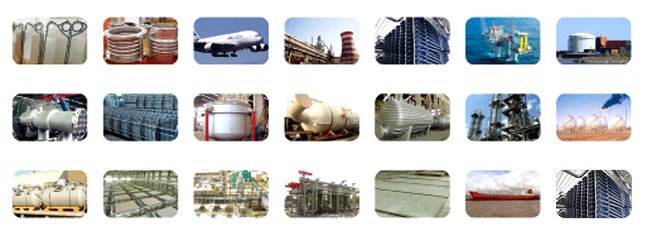
Stock
|
Form |
Specification |
Supply Form |
Others |
|
Sheet |
Thickness |
FAQ Content

